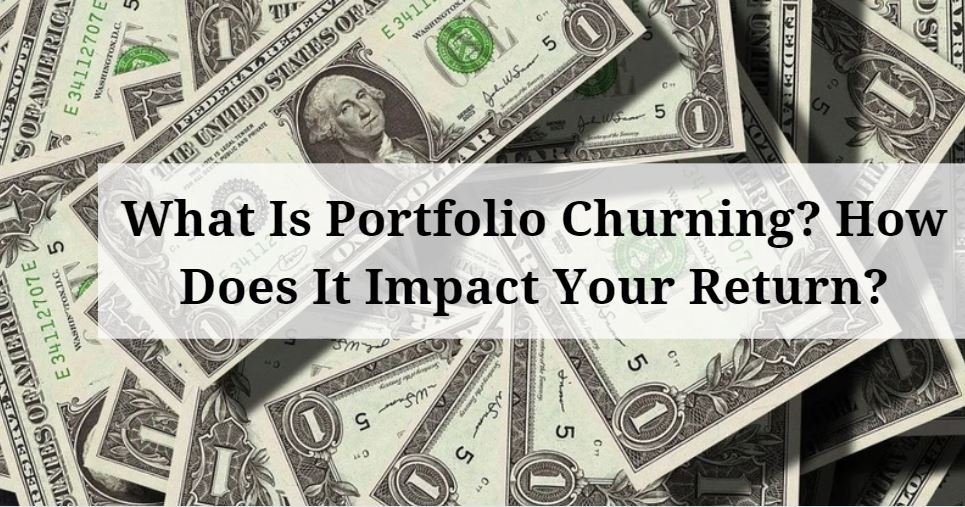What Is Portfolio Churning? How Does It Impact Your Return?
Mutual funds provide diversification and professional fund management, among others. Such advantages, however, come at a price; for example, if you want to engage in a mutual fund, you must also pay the fees. There are yearly (recurring) charges defined in terms of the expense ratio, as well as charges such as exit loads, which must be paid if you exit within a certain time frame, and the recently introduced transaction charge when purchasing a mutual fund scheme.
These costs can have a major impact on the mutual fund scheme’s results over longer time periods. Although these costs cannot be avoided, they can be reduced by investing wisely and avoiding regular portfolio churning. Let’s understand what portfolio churning is and its impact on your return.
What Exactly Is A Portfolio Churning?
Buying and selling mutual funds on a regular basis is referred to as churning the portfolio. This is the absolute opposite of the recommended investing strategy, which is to make investments and keep them for the long – term. The churn is largely determined by the market’s overall view or the underlying business’s view in the short and long term. Generally, investors churn their portfolios because their mutual fund agent/advisor advises them to do so; the agent will usually return to them a percentage of the commission he makes as an incentive to promote the churn.
Conversely, a portfolio churn is triggered by a desire to earn higher returns by investing in a higher-performing fund. Finally, some investors have an inexplicable desire to invest in funds with lower (NAV) net asset values or newer fund offerings, resulting in portfolio churn. The “portfolio turnover ratio” is a statistical ratio that tells you how often your fund manager buys and sells stocks.
Portfolio churning is determined by the fund’s type, which in turn sets the fund’s goal. If the fund is a growth or opportunities fund, churning will be higher in order to produce bigger returns; while, if the fund is a value fund, churning will be reduced in order to achieve lower but consistent returns. The churning of a portfolio is heavily influenced by market conditions. Portfolio churning is frequently higher during periods of high stock market volatility, as fund managers reap the benefit of the many buying and selling chances that unpredictable markets present in order to create higher returns.
Just what the situation may be, it is important to keep in mind that departing one fund and then reinvesting in another may incur additional charges in the manner of an exit load, an entry load, or both. And, over time, these costs accumulate and have a negative impact on returns. We will see the impacts of the portfolio in the below section.
What Is a Portfolio Turnover Ratio?
The term Portfolio Turnover Ratio is a key part of evaluating a mutual fund’s performance. It provides an overview of any mutual fund’s trading activities over a specific time period. The Portfolio Turnover Ratio measures how frequently the fund’s holdings have changed in the previous year. It also indicates the performance of the fund manager. It’s expressed as a percentage. The Portfolio Turnover Ratio of a fund can, however, be calculated using a simple formula. It’s computed by dividing the lesser of purchases or sales by the average asset under management (AUM).
The Impact Of Portfolio Churning
Whenever your financial advisor encourages you to churn your mutual fund portfolio on a regular basis, you should be conscious of the associated fees. You can assess the negative impact of portfolio churn with a small activity including some computations. But first, let’s set the activities’ ground rules.
1. Decide how much you want to invest and how long you want to invest it. Let’s say you invest Rs 100,000 for a 5-year period.
2. Then decide on the investment’s annual rate of return. Let’s say the rate is 15.00 percent per year in this instance.
3. Finally, take into account the loads (entry and exit) that you will incur when redeeming monies from one fund and putting them in another. Assuming that the total exit load is 1% and the transaction charge is Rs 100.
Let’s analyze the impact of churning on returns using two different options, A and B.
Option A: Without churning the portfolio, the investment grows.
Calculate the maturity value of a Rs 100,000 investment (including a transaction charge of Rs100) over a 5-year period at a rate of 15.00 percent per year. Throughout the investing period, the portfolio is not churned in any way. The maturity value will be Rs 200,935.
Option B: Every year, the portfolio is churned.
The maturity value of the investment is calculated in this scenario, considering that the portfolio is churned once a year i.e. 5 times throughout the course of 5-year investment duration. Loads and costs will have to be paid in every transaction due to the churn. The maturity value will be Rs192,425, assuming a constant rate of return.
Option A and Option B differ by Rs 8,483. Over a five-year period, the annual churning of your mutual fund portfolio will cost you roughly 8.5 percent of your initial investment. The increased cash earned by choosing Option A or the loss sustained by opting Option B is Rs 8,483.
Portfolio Churn Can Indicate Short-Term Thinking:
The underlying concept is the worst aspect of excessive portfolio churn. It is just too easy to get caught up in thinking in months and quarters rather than years or even decades. For fund managers, who are reviewed on a quarterly and yearly basis, this is a serious issue. Some pity them; they have to appease a number of clientele with wildly disparate financial objectives. You have a clear understanding of your objectives and can devise a strategy to achieve them. Risks in the global economy are not caused by a little buying and selling of your own stocks. However, this increased volatility provides chances for value investors such as us to acquire good companies at great prices, holding them whilst they make sense, and generate real wealth over time.
Portfolio churn has obvious immediate consequences. If commissions are paid on every trade, reducing the number of unneeded trades will save you money. Similarly, if every trade is subject to taxation (especially short-term capital gains taxes), limiting unneeded trades will lower your tax bill. Each tax or commission you pay reduces your profit and the money you may reinvest to make your work better for you in the next.
Conclusion
Based on your assessment of the market, sector, and underlying business of the company, buy and sell when you believe it is necessary. Avoid needless churn because it might result in a significant increase in transaction costs and taxes. Resist taking a short-term view of the market and instead invest with a long-term vision in mind. The detrimental impacts of churning the portfolio on a regular basis are apparent. It is your responsibility to not be swayed by the financial advisor’s driven sales pitches and to make an informed investment decision.



